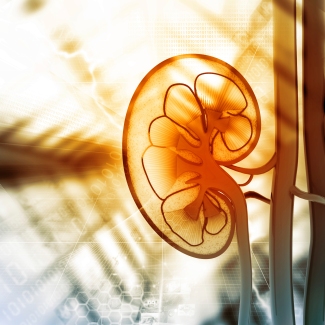
Human kidney cross section
The odds of donating an organ and living a totally normal life afterward are excellent. Statistically, you are more likely to choke, accidentally poison yourself, or die of a heart attack. Once the kidney is removed, the remaining kidney doubles in size in under a year, and can function at the capacity of 2 healthy kidneys. According to Johns Hopkins, recent studies have shown that donors tend to do as well or better than the general population in regard to long term medical complications.
In the event that your remaining kidney does fail, there is a priority system in place so that donors receive extra points for deceased donor kidney transplant when they are on the waiting list. This means that you get first dibs for life on the waiting list in the event your remaining kidney fails.
Northwestern Memorial’s program among the top nationally in patient outcomes and the number of transplants performed, transplanting around 300 organs a year. They have performed 2,300 living donor kidney transplants (86 total in 2015), and more than 220 living donor liver transplants. Newly released data from the United Network of Organ Sharing (UNOS) indicates that Northwestern Memorial Hospital’s living donor kidney transplant program is the largest in the country based on volume of transplant. A donor has NEVER died as a result of complications from donation at Northwestern. The donor surgery has a .03% mortality rate (i.e., 3 in 10,000). As a point comparison, according to the U.S. Census Bureau, the 2007 infant mortality rate in the United States is .64% (e.g., 64 in 10,000) indicating that it is about 20 times riskier to be born in the United States than to donate a kidney.
At Northwestern, the overall donor complication rate is 5.7%. The most common complications are non-life threatening, do not prolong hospital stay beyond a day, and include things like needing a blood transfusion or not being able to urinate temporarily after surgery. 1 percent of donors have needed medication, like antibiotics, for wound infections or post-operative pneumonia. 0.2% of donors have had ongoing problems, like nerve damage or hernias. Less than 0.1% of donors have had renal failure after donation.